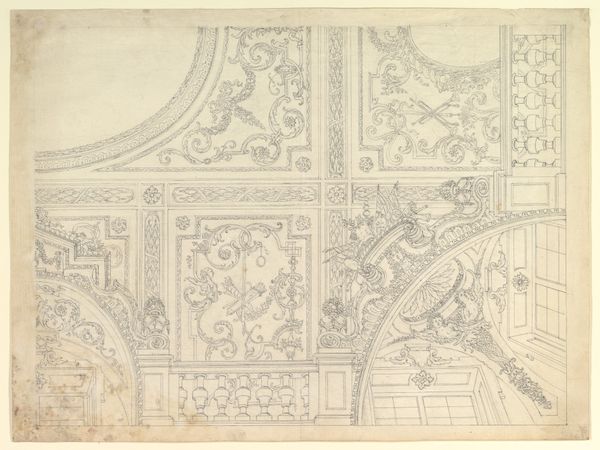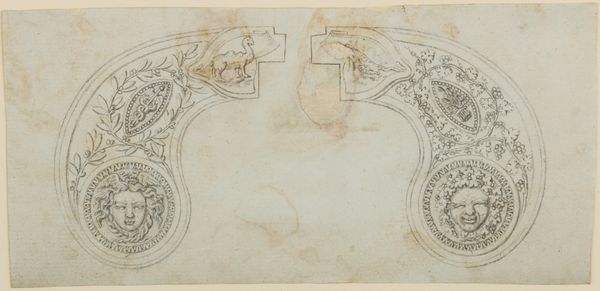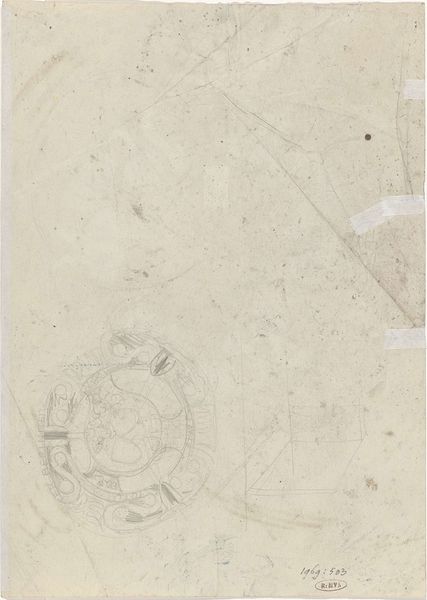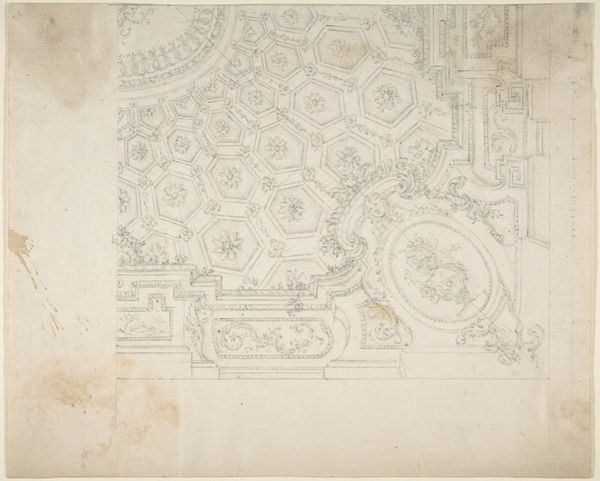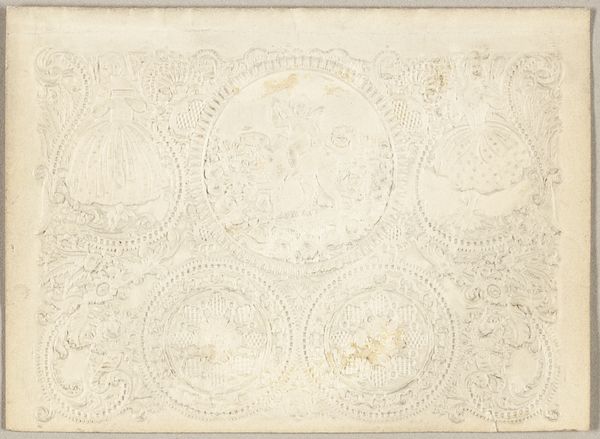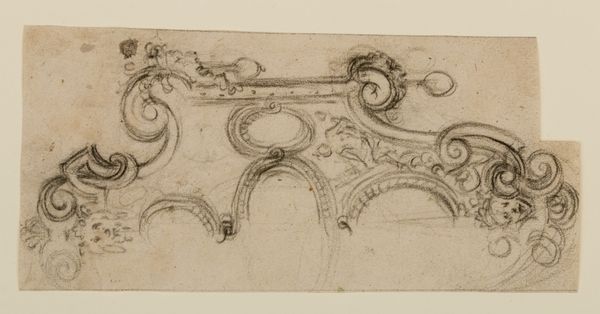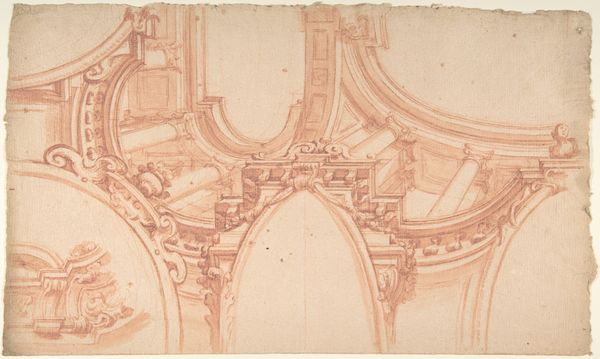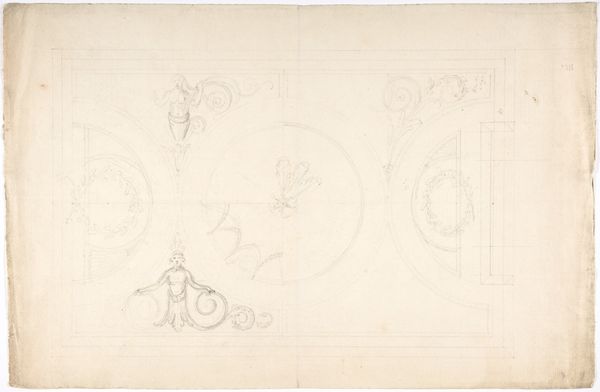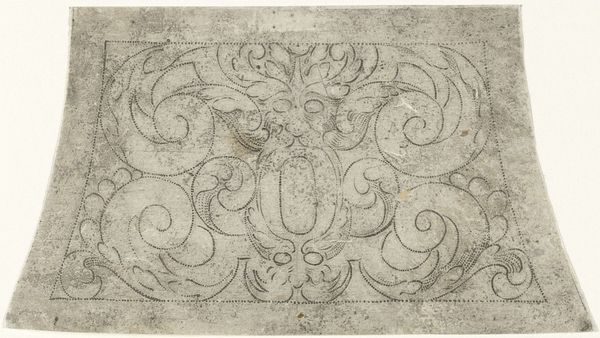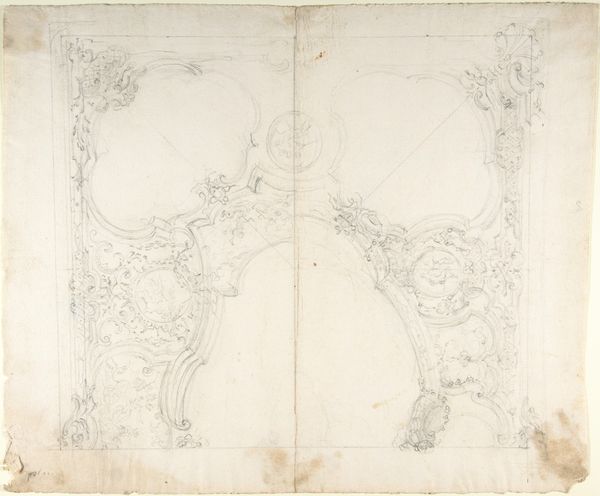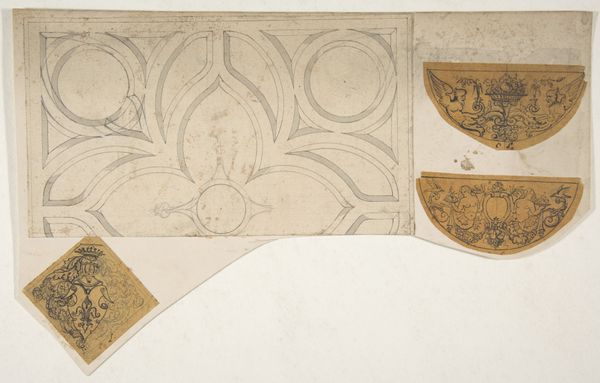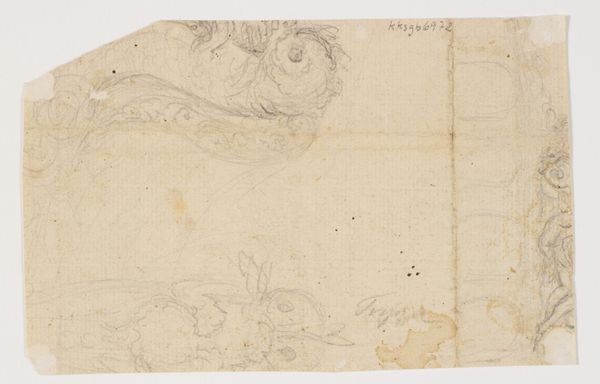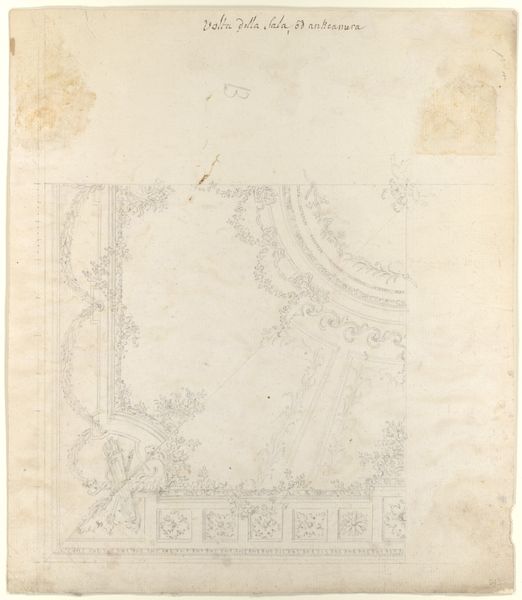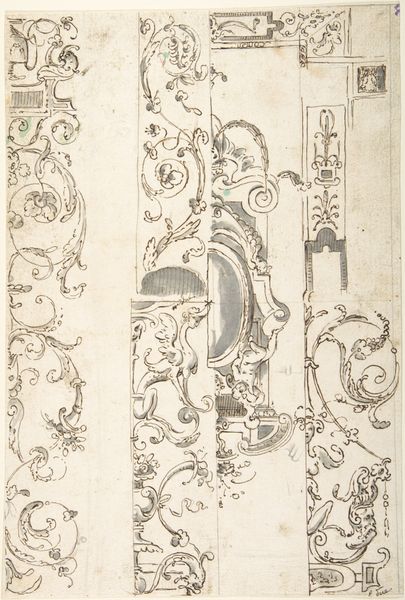
drawing, pencil
#
drawing
#
pencil sketch
#
landscape
#
form
#
11_renaissance
#
pencil
#
line
#
italian-renaissance
#
watercolor
Dimensions: height 305 mm, width 194 mm
Copyright: Rijks Museum: Open Domain
Curator: Here we have Giovanni Cambiaso's "Twee ontwerpen voor een wandschildering," or "Two Designs for a Wall Painting," created sometime between 1505 and 1579. The medium is pencil and possibly watercolor. Editor: My first impression is of elegant constraint. The designs feel both ornate and unfinished, leaving space for the viewer to imagine the textures and final form of the intended mural. There is definitely a muted, almost ethereal quality to the artwork as a whole. Curator: Indeed. I see a negotiation between secular display and humanist sensibilities. The design on the left seems to echo a stylized escutcheon. This hints at familial pride and a longing for prestige, all common concerns within the social fabric of Renaissance Italy. Editor: Speaking of materials and production, I wonder what kind of pigment was initially envisioned for this wall painting, and whether it was eventually completed based on these designs. What specific local sources or imported goods might have determined the eventual coloration and material expression? Curator: It is easy to imagine lapis lazuli making an appearance, and I note in the design on the right, that the central, framed landscape has architectural elements which serve to represent the ideal city of the Renaissance, imbued with values of civic harmony and reasoned thought. Editor: This image really underscores the division of labor in Renaissance art. How many artisans and workshops were involved in translating these delicate drawings into large-scale, enduring public works? Curator: It reminds us of the collaborative aspect inherent in realizing grand artistic visions within hierarchical workshops, also reflecting the artist's dependence on both patronage and the availability of resources. Editor: Reflecting on the materiality and the symbols, it adds depth to the ways we see consumption practices. This offers insight into an elaborate process of patronage during the Renaissance. Curator: A look into enduring visual vocabularies of aspiration in the 16th century. Editor: Precisely! These muted pencil lines suggest both the promise and the hard work required to bring grand visions into tangible reality.
Comments
No comments
Be the first to comment and join the conversation on the ultimate creative platform.
